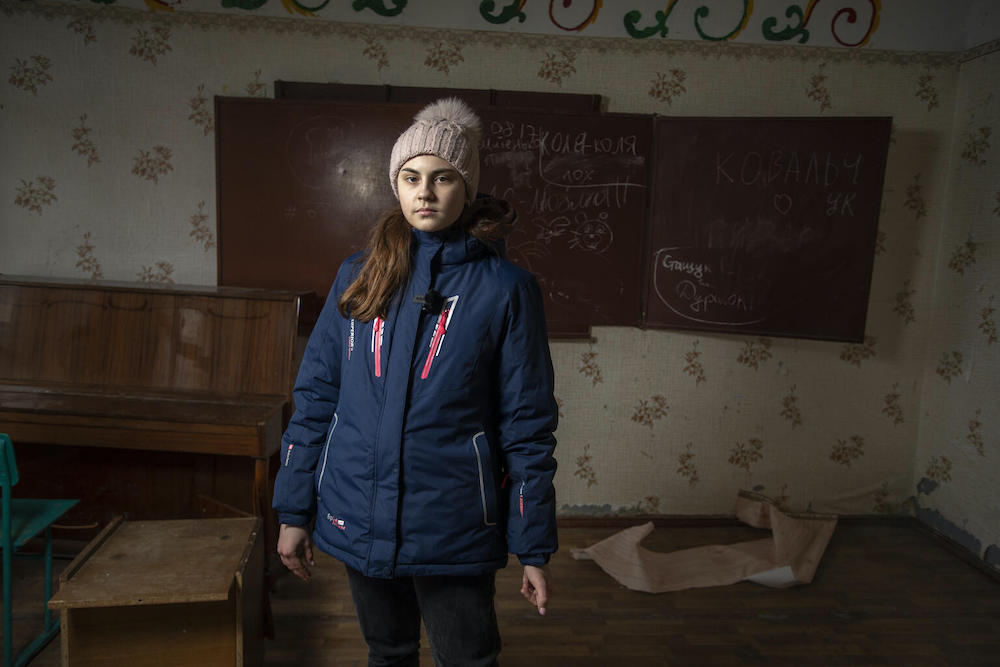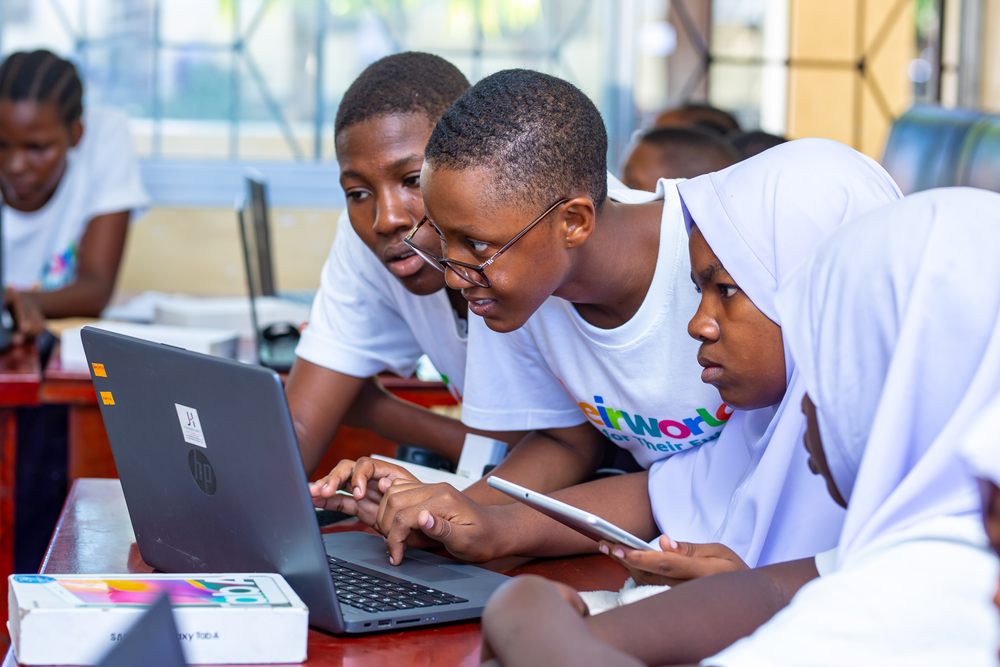
A new decade needs a bold plan to unlock big change for the next generation
International Finance Facility for Education, Justin van Fleet, Sustainable Development Goals
Theirworld President Justin van Fleet on the biggest challenges and opportunities in the mission to deliver inclusive and quality education for all by 2030.
The 2020s are beginning with volatile political, environmental, technological and economic forces at play. Amid these dynamics, a new humanitarian countdown has begun.
The international community’s Sustainable Development Goals (SDGs) – 17 targets ranging from healthcare and education to the environment – include the deadline to provide inclusive and equitable quality education for all by 2030.
With 10 years to achieve this ambition, the challenge could not be greater. On current trends, one out of every two young people will be left behind by the end of the decade, lacking even the most basic skills needed to join the workforce.
True commitment to reaching the target of global education – SDG 4 – requires planning bold enough to match its ambition. Theirworld is committed to being at the vanguard of the effort to mobilise the political will and funding to turn SDG 4 into a reality, and we approach this enormous challenge with an independent spirit and an open mind.
To start the 10-year countdown to 2030, here is my list of the five biggest challenges we face and the five biggest opportunities we can seize to achieve unprecedented progress.
The five biggest challenges for global education
1. The leaky bucket has become too leaky.
The American economist Arthur Okun pioneered the concept of the “leaky bucket” – the idea that wealth redistributions incur inefficiencies which reduce their overall impact. In 2020, we can no longer tolerate how leaky the global education bucket has become.
The speed and efficiency with which international institutions and governments respond to the global education crisis are underwhelming and the transaction costs are too high. Delays in planning, hesitation to take action, layers of bureaucracies, high administrative costs at global, regional and country levels, and lack of accountability to the young people who are meant to benefit from education aid – all these factors are holding us back.
2. Climate change is a danger we all face.
Today’s young people are at the forefront of innovation in combating climate change. But by excluding so many young people from education and opportunity, we’re limiting the potential solutions.
When climate protesters walk out of school, it’s easy to forget the millions who yearn for a school to walk into. At the same time, climate is affecting education: disasters displace young people at an unprecedented rate and schools and places of learning are increasingly under threat.
3. Inequality knows no borders.
The paradigm of rich countries and poor countries is outdated. Today, the global education challenge is about marginalised young people within all countries. Middle-income countries have the highest number of people living in extreme poverty – not low-income countries. Some of the most desperate situations for young people are on the shores of Europe.
The bulk of young people in the coming decade will increasingly be living in Africa. And the exclusion of people with disabilities and minorities happens in rich and poor countries alike. The increased complexity of marginalised children and youth who are not on track to learn basic skills impacts every community across the globe, requiring a diverse set of policy responses.
4. Data protection, privacy and accuracy of information could go either way.
Technology has advanced rapidly. The ability to collect data to address individual learning needs is powerful indeed, but data privacy will become even more important as it has both social development and commercial value.
And the rate at which information is transmitted via unreliable sources in an era of “fake news” places at greater risk the core content of a quality education.
5. In a world of plenty, we seem to have a hard time finding money.
Governments are not doing enough. The international community has not unlocked sufficient financing. And the interests of philanthropists and business are so divergent it is difficult to see how large scale and equitable impact will be achieved without increased collaboration and pooling of resources.
The five biggest opportunities for progress
There are several things we can campaign for in order to get education moving in the right direction very quickly.
1. Make our institutions work.
We need to be fiercely efficient in devoting our time and resources to smart and effective investments that secure the right to inclusive and equitable quality education for the largest number of young people as quickly as possible. We need to look at our institutions and make them deliver more systematically.
We must invest more in our missions and less on bureaucracy. And we need to embrace innovation and set new standards that can harness the best of data and information to deliver change, while protecting the privacy of children and youth. All of this will require us to be more transparent, accountable and collaborative – and redirect more energy and resources from talk to action.
2. Support the youth movement.
Meeting youth campaigners in countries across the world has reminded me of the absolute need to support the next generation of change-makers. These are the young people on the frontlines of fighting for inclusion, early childhood education, safe schools and skills.
If there is one thing we can learn from the climate movement, it’s the need to embrace young people and support them in this civil rights struggle. At a time when information is distorted by rogue media feeds, this will require providing them with the best data and evidence, enabling them to steer this movement effectively.
3. Double-down on early years and skills for the future.
We know that investments in early childhood education can be a great equaliser in society – so we need to double-down on advocating for its widespread and equitable implementation. Likewise, once young people leave education systems, we need to make sure they have the relevant skills for the workforce. Investing in these bookends of the educational process will greatly reduce inequality.
4. Harness the biggest financial opportunity in the history of education.
The new International Finance Facility for Education is a historical opportunity to add billions of dollars in new finance to help qualifying countries fund education. It’s time to make this option available to all countries who qualify and who want to deliver the right to education.
We also need to ensure that education responsibly captures new investment from the private sector to support free, quality public education through ESG investments, the bond market and other ways to harness new resources alongside aid and increased domestic government finance.
5. Innovate and include.
The scale of the global education crisis is so large that everyone has a role to play – and technology makes inclusion more possible than ever before. This year, I have had the opportunity to work and learn from several individuals with disabilities who campaign for education.
We have become a much stronger sector because of a sense of inclusion – from people with physical disabilities to learning needs and other challenges. And it’s time to practise in the workplace and advocacy space what we say is important in the classroom: including everyone.
We need to secure the political support necessary to remove exclusion from education once and for all, while learning to be more supportive and diverse as movement.
Final thoughts
We know how to get every child into school and learning. A few years ago, the Education Commission showed how some countries are making rapid progress: a focus on performance, inclusion, innovation and finance were the key ingredients to accelerating progress.
Its projections show that making significant strides by 2030 is within reach.
But as we enter this new countdown, the international community, governments and civil society will need to take decisive and transformative action – otherwise the likelihood of progress will rapidly diminish.
This is our opportunity to be bold and unlock big change that the next generation needs.
More news

